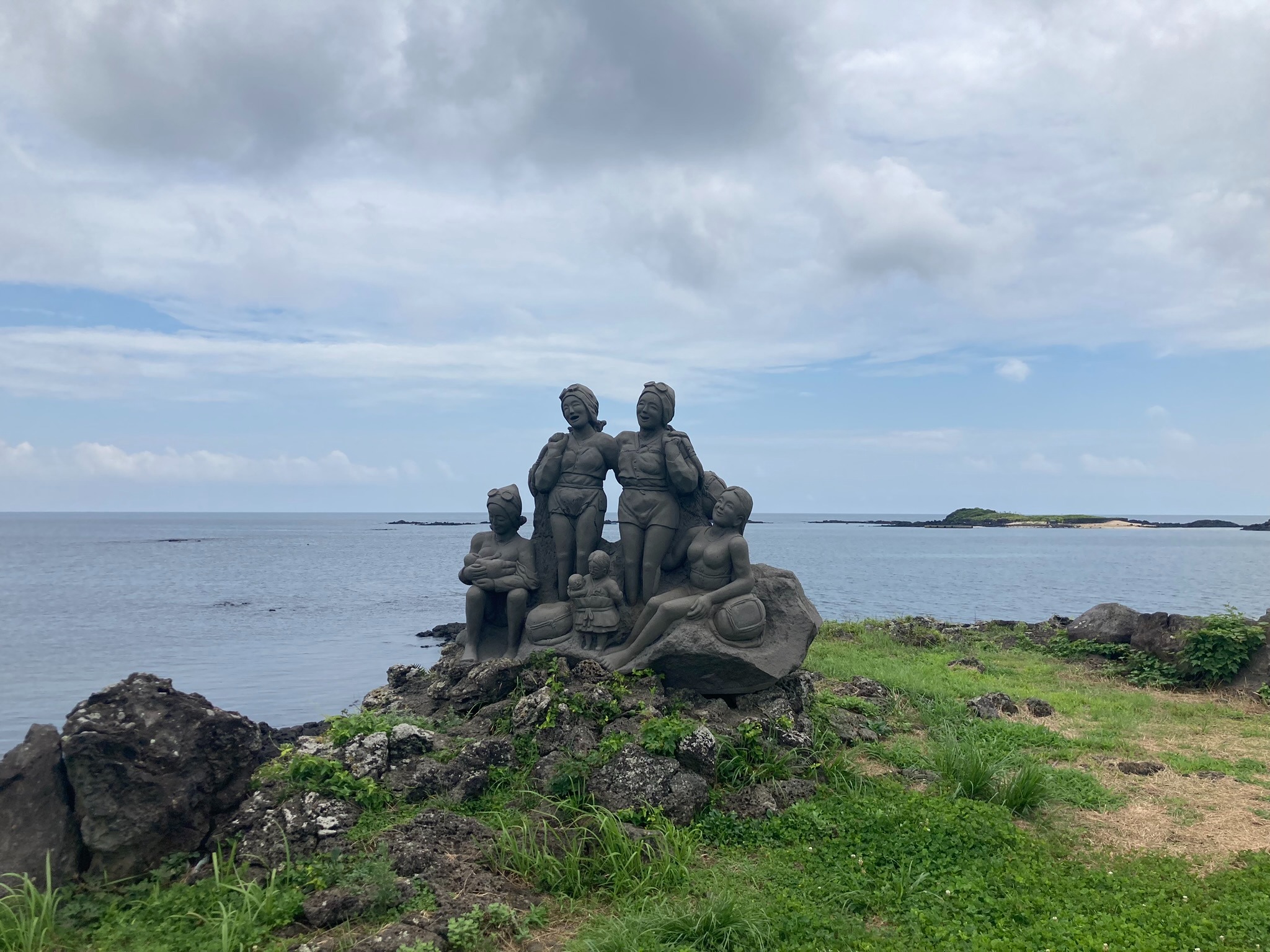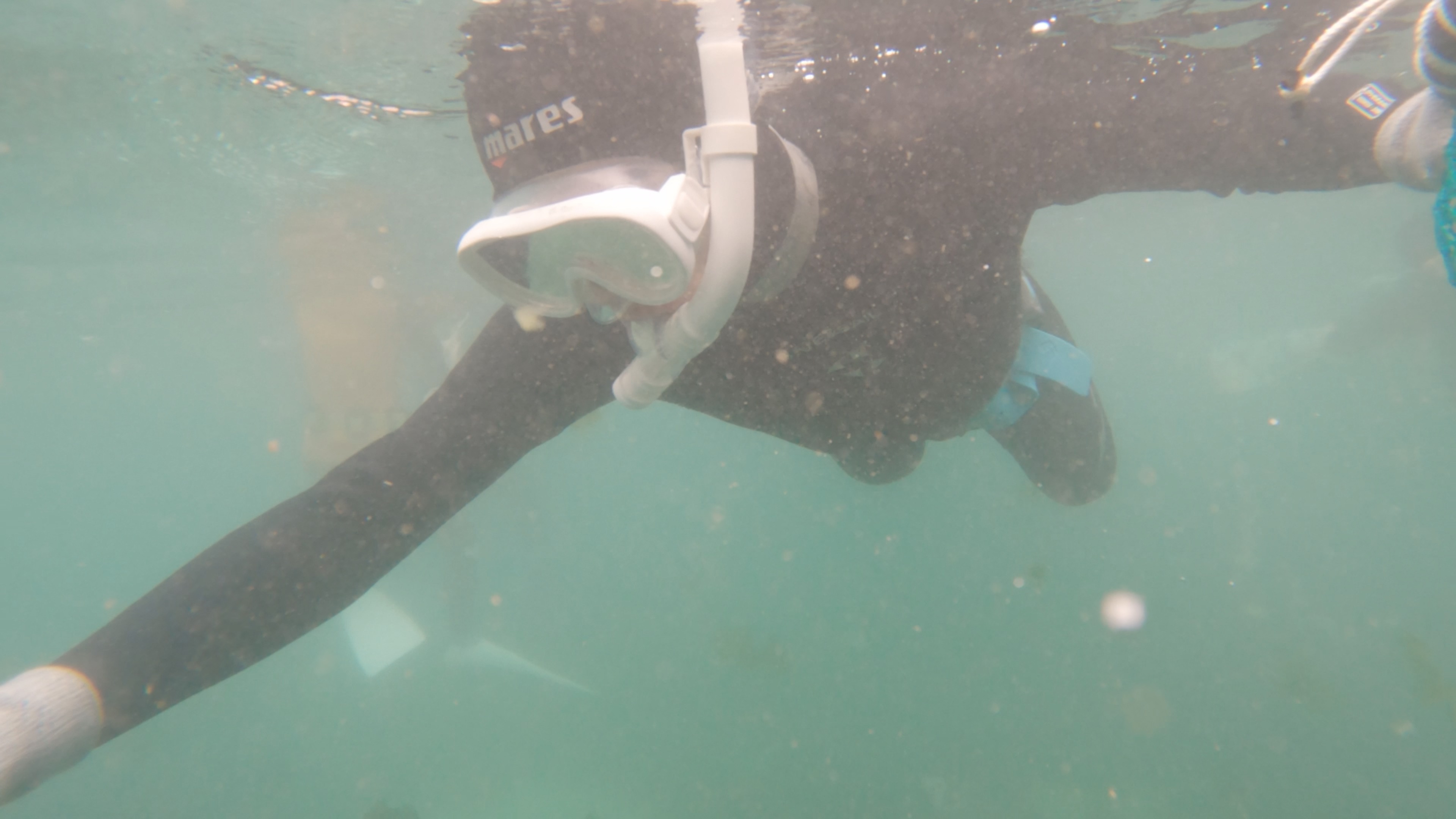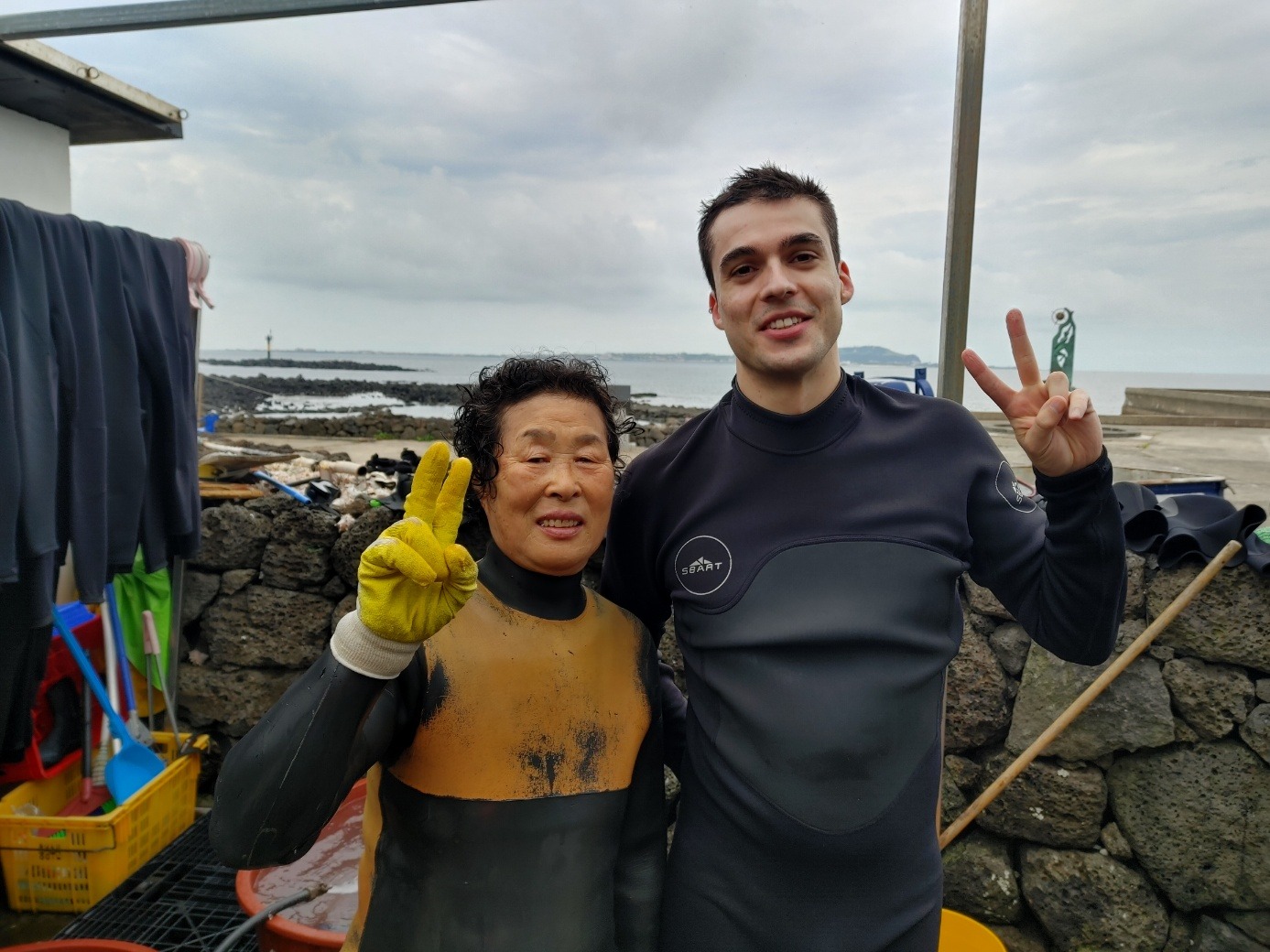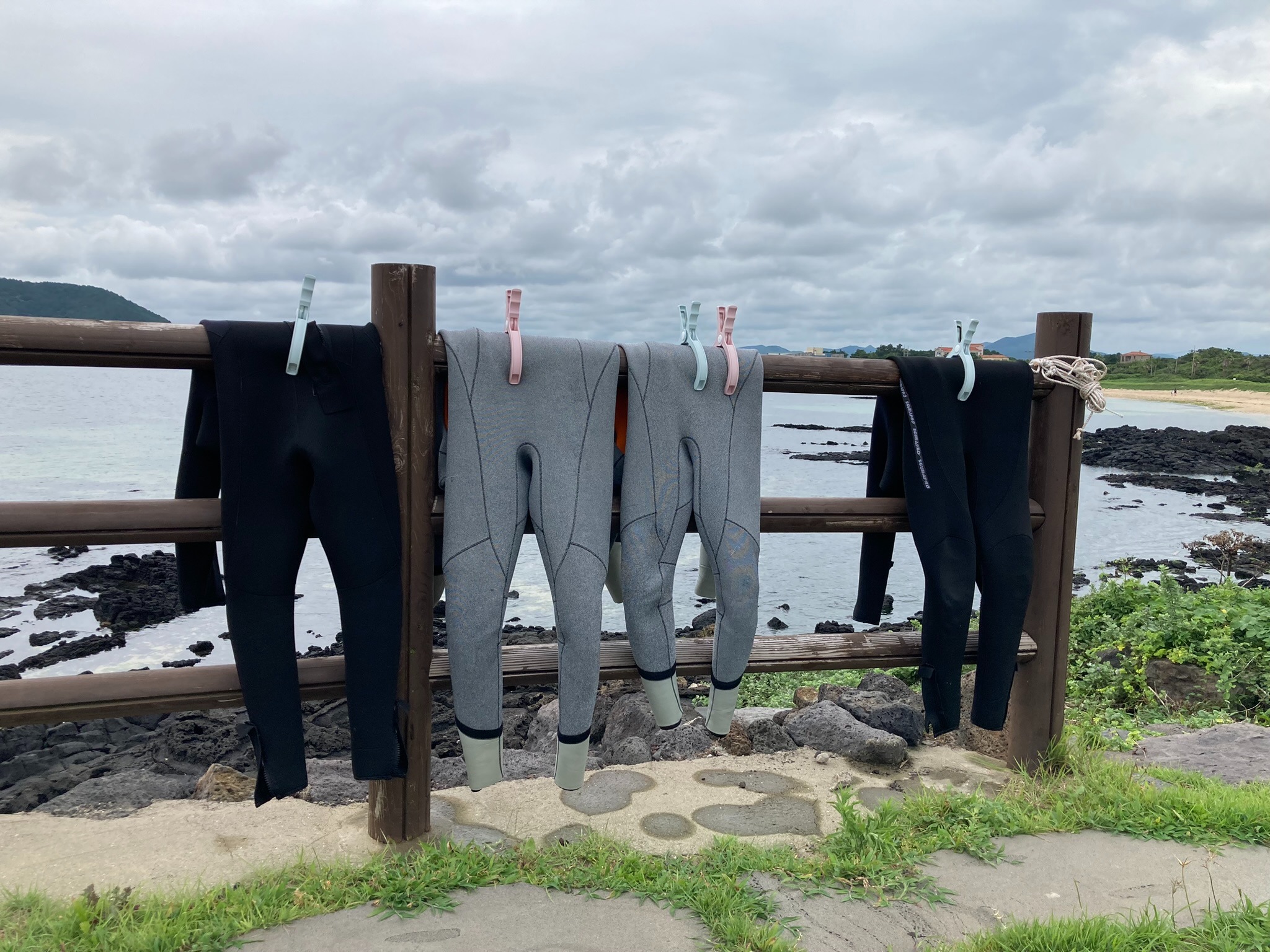- 한국어
- English
- 日本語
- 中文
- العربية
- Español
- Français
- Deutsch
- Pусский
- Tiếng Việt
- Indonesian
By Charles Audouin and Park Jin-seo
Video = Korean Culture and Information Service
A Korea.net team on July 13 at 2 p.m. arrived at the workplace of haenyeo (female diver) Kang Hye Ri in the town of Hallim-eup on Jeju Island.
Contrary to expectations, Kang was not of elderly age but a young woman in her 30s with seven years of experience as a haenyeo. When asked if most of the divers were not that old, she said her profession had about 200 young haenyeo along with their male counterparts haenam.
In the past, men dove into the sea to collect seafood but women replaced them as the male population dwindled. Around 20 haenam remain in Jeju.
The haenyeo's job of diving into the sea and collecting seafood is called muljil, which is allowed from September to June. Haenyeo divide seafood by type and fishing village and restrict what can be caught depending on the spawning seasons of undersea species. They can collect abalone only from January to September.

This statue of haenyeo is in the town of Gujwa-eup on Jeju Island. Haenyeo dive and catch seafood without oxygen tanks and can descend as deep as 20 m. (Charles Audouin)
Muljil conditions are tricky. Even when such work is allowed, erratic weather prevents divers from catching seafood.
"We can only work when the sea accepts us," Kang said. This is why haenyeo go underwater just 10-15 times a month.
In the past, haenyeo dove wearing fabric clothes without flippers but from the 1970s, they started using diving suits to work longer.
Kang wore her diving suit, flippers and lead belt that allowed her to dive deeper. She also wore a swimming cap, gloves, goggles and kkakkuri, a device used to extract sea urchin, and headed for the sea.

Korea.net staff writer Charles Audouin on July 13 dives in waters off the coast of the town Hallim-eup on Jeju Island. He said it required a lot of physical strength to withstand the strong waves. (OSSC production team)
The following is my personal account of my haenyeo experience.
I dove into the sea after finishing all preparations. My ears were deafened due to water pressure and my mind went a little blank, but in front of my eyes unfolded a beautiful scenery that I had seen only in nature documentaries.
I went above water since I could no longer hold my breath. Then I dove back into the water determined to catch what I saw before going up for air.
After many attempts, I finally held the conch in hands. This moment made me feel that seafood, which is easily available at fish or hypermarkets, simply does not magically appear out of the blue.

Korea.net staff writer Charles Audouin on July 21 takes a photo with haenyeo Jung Chun-ja (left) after his diving experience at the interactive Hado Fishing Village in the town of Gujwa-eup on Jeju Island. With 50 years of experience in her field, Jung said she catches daily about 100 kg of murex shells, abalone and octopus if she works four hours a day, adding, "I'm happiest when I find abalone." (Charles Audouin)
Catching seafood with haenyeo with 50 years of experience
A week later on July 21 at 2 p.m., we headed to the interactive Hado Fishing Village in the Jeju town of Gujwa-eup. There, we met Jung Chun-ja, 76, who has lived by the sea since childhood and learned on her own how to catch seafood without training or education from anyone.
Haenyeo follow a strict hierarchy of sanggun, the senior most rank, junggun and hagun depending on age and muljil experience. A ranking determines a diver's position in bulteog, a place to share a sense of community for working haenyeo and where they change clothes and rest by the fire.
Jung is a junggun diver who can hold her breath for three to four minutes at a time.
On what is most important during work, Jung said, "Knowing where the things are." The word "things" is what haenyeo use to describe seafood.
Around 3:30 p.m., we dove into the sea with Jung and about 20 other participants, and this was easier this time due to my experience last week. Everyone got separated by the waves and soon, the only person left in front of me was Jung.
This was my opportunity to see with my own eyes a haenyeo with half a century of experience do her job.
As I floated above the water and looked down at the sea, I saw Jung dive for a short time, throw rocks and swim after "things." She came above water, hollered, "They're not there, they're not there" and dove back in.
She followed the creature's movements and thoroughly searched the rocks but found just sand.

Diving suits on July 21 are dried outdoors after the haenyeo experience at the interactive Hado Fishing Village in the town of Gujwa-eup on Jeju Island. (Charles Audouin)
Dyondra Wilson, an American social influencer and teacher of English who took part in the haenyeo experience, said, "I was a bit surprised because we dove straight into the sea without prior lessons, but the haenyeo guided us in the water and helped us find conches. So it was fun."
"Despite the language barrier, I was able to communicate and build a true relationship with the elderly haenyeo. I considered them my 'sea mothers' and had a great time."
"It was most interesting to see haenyeo showing such passion for their work," Colombian influencer Bibiana Rodriguez said. "I am thankful to haenyeo for kindly teaching me knowledge and skills that cannot be learned from books."
caudouin@korea.kr